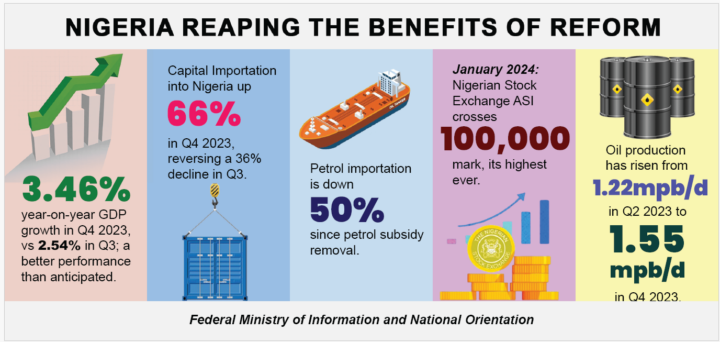By Yunusa Bunu
For the past ten years, Tumbuktu Triangle has been one of the four notorious strongholds of Boko Haram.
The other three are Sambisa Forest, the Mandara Mountain and the Lake Chad Tumbus.
Characterized by a collection of bushes, deserted open lands and wastelands with relatively ‘thick’ vegetation and tall grasses, the triangle stretches over four local government areas of Borno State—Damboa, Jere, Kaga, Konduga—and one, Gujba, in Yobe.
It remains one of the strongholds of the terrorists since 2011. They control territories within and around the perimeter of the triangle, which further brings several other local governments in the two states such as Biu, Damaturu, Gujba and Gwoza, among others, under their spheres of ‘influence’. They also coordinate all the attacks, abductions and ambushes that take place in the general area.
YERWA EXPRESS NEWS’ several months of research showed that the boundaries appear to have been drawn effectively in 2014, as part of a ‘massive revenge mission’ to destroy communities where the CJTF had actively operated.
They took control of all entrances into the triangle, via Bama, Damboa—and hotly contested with Nigerian troops over Benisheikh. Until 2017, the Maiduguri – Bama Road remained inaccessible. The Maiduguri – Damboa – Biu Road is still being stabilized by troops, as parts of it is still under their control, especially along Sabon Gari.
In this report YERWA EXPRESS NEWS explained how they mount checkpoints on major roads, allocate lands and exact taxes from the public, all within and around the axis.
Even the Maiduguri – Damaturu Road is still only safe for travels between 6:00 am and 5:00 pm.
It is also along the same axis that the terrorists brought down several transmission towers to cut Maiduguri, Borno’s capital city from the national grid for over 17 months now. They continued to sabotage all efforts put at repairs through attacks, bombings and inflicting further damages on the site, all carried out by their fighters in the axis.
The triangle was largely cleared last year by Nigerian troops. Many camps and hideouts in the axis were destroyed. But the terrorists later returned and regained control over them, as they remained unoccupied.
The Timbuktu Triangle
The territory under review, even if roughly, is triangular in shape, hence the term ‘triangle’.
We cannot immediately establish why they adopted the name Timbuktu, which is a city in the Republic of Mali—or its origin, but it may well be connected with its historical prominence as a centre of Islamic scholarship and learning. It is a common practice among terrorists, and more so Boko Haram, to name their bases or camps after Muslim or Arab cities and other references.
The term Timbuktu Triangle was also later adopted by the military to refer to the axis, which runs from Maiduguri, northwestward to Dankalwa in Benisheikh, headquarters of Kaga Local Government Area; and from there southward to terminate at Damboa. Then from Damboa it goes northward to link at Maiduguri, cutting a shape that represents, roughly, a triangle.
They use the empty wastelands as hideouts, camps and operating bases—taking advantage of the relatively thick vegetation for defense and the small water bodies like Chalak, Kungunari and Sansan for other purposes.
Within this cut, there are about fifty communities, who lived at the terrorists’ ‘mercy’, with Nigerian troops checkmating their influence from time to time in the 11 years.
Some of these communities are Talala, Buk, Muchima A and B, Alagarno, Yajiwa, Mai Umari, Galengi, Maudori, Mune, Gurzum, Ngala’a, Kukuruk, Mitiri, Kalmari, Munguzum, Abulam, Awolom Kashimri, Awolom Kasuwa, Yeriri, Musuni, Mada, Busu and Ngamari, among others.
Following the split of Boko Haram in 2016 into factions, most of the loyalists of Musab Albarnawi, leader of the ISWAP faction, moved in and took over the Lake Chad Tumbus.
Abubakar Shekau, the leader of the Jama’a Atul Ahlil Sunnah Lidda’wati wal Jihad faction controlled Sambisa Forest, Timbuktu Triangle and parts of the Mandara Mountain.
Competition ensued between the two groups over the control of the the zones, especially those under the JAS’ control.
This competition peaked in May 2021 when ISWAP, mounted on several motorcycles and gun trucks, infiltrated the triangle and the Sambisa Forest through Ngamdu to challenge Shekau’s legitimacy to govern the area.
In the ensuing battles, he (Shekau) and many of his top commanders died. Following that, ISWAP took many communities in the triangle and Sambisa, such as Buk (where it erected a prison to keep captives), Talala, Abulam and Muchima, among others.
The rivalry between the factions over the control of the three zones only intensified.
Operation Desert Sanity / Operation Lake Sanity
The troops of Operation Hadin Kai and Multinational Joint Task Force, MNJTF, launched two new clearance operations across the North East, extending down to the shores of Lake Chad, codenamed Operation Desert Sanity and Operation Lake Sanity, to clear the remnants of the terrorists.
Operation Desert Sanity is being implemented largely by the troops of Operation Hadin Kai, in conjunction with members of the Civilian JTF and vigilantes in Sambisa Forest, Timbuktu Triangle and Mandara Mountains.
In the Lake Chad Tumbus, which is predominantly an ISWAP territory, troops of the Multinational Joint Task Force are leading and implementing the Operation Lake Sanity, to clear those hibernating in the general area.
The two operations are widely celebrated in the media for recording massive successes. Many commanders of both factions were eliminated. Several of their camps and hideouts were also cleared, with their highly sophisticated weapons recovered.
The clearance operation at the triangle
Several of these places were in and around the Timbuktu Triangle.
Some of them include Wajiroko, Sabon Gari, Buk 1 and 2, Muchima A and B, Yeriri, Abulam, Talala, Munguzum, Kafa, Awolom Kasuwa, Awolom Kashimri, Kukuruk, Yejiwa, Abba Gajiri, Dusula, and Afa.
Many commanders under whom the territory is were either killed or forced to flee with their followers.
What next According to credible sources, they fled to the wastelands around Alagarno, also in the triangle, located around Mada, Busu, Kungunari and Mane.
A vigilante who was part of the operations, told YERWA EXPRESS NEWS that ‘most of the terrorists from Wajiroko, Buk, Muchima and other places are now in Mune.
‘When they heard we were coming, most of them ran away and left behind a lot of weapons. Whenever they get the news that we are coming to a location, they migrated to the next location, so there is still more work to do because most of them are not yet killed, they just moved into the bushes with their guns,’ the source said.
They are still attacking soft targets within the triangle from new hideouts, now believed to be largely at Alagarno. A recent example was the attack on a military base in Molai, Damboa, which occurred a month ago.
This suggests that even though the terrorists’ camps have been cleared and their weapons recovered under the operation, they seemed to have moved into other hideouts.
This report was first published by Yerwa Express




